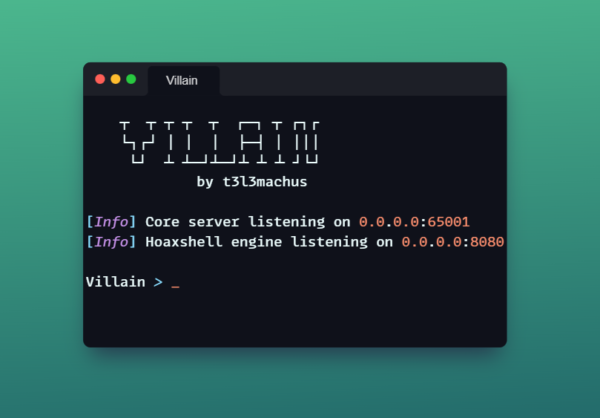Meet Villain: A Powerful and Flexible C2 Framework for Penetration Testing
Hey there, security lovers! Do you like hacking stuff and breaking into networks? Do you enjoy playing with C2 frameworks and reverse shells? If you answered yes to any of these questions, then this blog post is for you!
C2 frameworks are awesome tools that let you control compromised devices via network connections. You can use them to do all kinds of cool things, like delivering more malware, stealing data, or moving around the network. C2 frameworks can also help you avoid getting caught by mimicking normal traffic and bypassing security devices.
There are many C2 frameworks out there, both paid and free. Some of the most popular ones are Cobalt Strike, Empire, Metasploit, and Covenant. But today, I want to tell you about a new and lesser-known C2 framework called Villain.
Villain is a free and open-source C2 framework that can handle multiple TCP socket & HoaxShell-based reverse shells, enhance their functionality with additional features (commands, utilities etc) and share them among connected sibling servers (Villain instances running on different machines). It works on Windows and Linux platforms and lets you generate payloads based on default, customizable and/or user defined payload templates.
Some of the cool features of Villain are:
- File uploads (via http)
- Auto-http request & exec scripts against sessions
- Auto-invoke ConPtyShell against a powershell r-shell session to get a fully interactive Windows shell
- Team chat
- Session Defender (a feature that checks your commands for mistakes / unintentional input that may cause a shell to hang)
Villain is designed for penetration testing and red teaming assessments, and it is not meant to be used for illegal purposes. The communication between sibling servers is AES encrypted using the recipient sibling server’s ID as the encryption key and the 16 first bytes of the local server’s ID as IV.
To use Villain, you need to clone the repository from GitHub and install the required dependencies. You also need to run it as root and specify the port numbers for different listeners. You can find more details and usage instructions on the GitHub page.
Villain is a powerful and flexible C2 framework that can help you test the security of your network and systems. It is also a new tool that may not be well-known or detected by some security solutions. But remember, you should always use it with caution and permission, as it can cause serious damage if misused.
If you want to learn more about Villain or other C2 frameworks, you can check out these resources:
- The C2 Matrix: A project that compares and contrasts various C2 frameworks based on different criteria.
- Slingshot: A tool that lets you quickly deploy various C2 frameworks in a virtual environment for testing purposes.
- Red Team: C2 frameworks for pentesting: An article that gives an overview of some of the most used C2 frameworks during internal assessments.
I hope you enjoyed this blog post and learned something new. If you have any questions or feedback, please feel free to leave a comment below. Thank you for reading!
